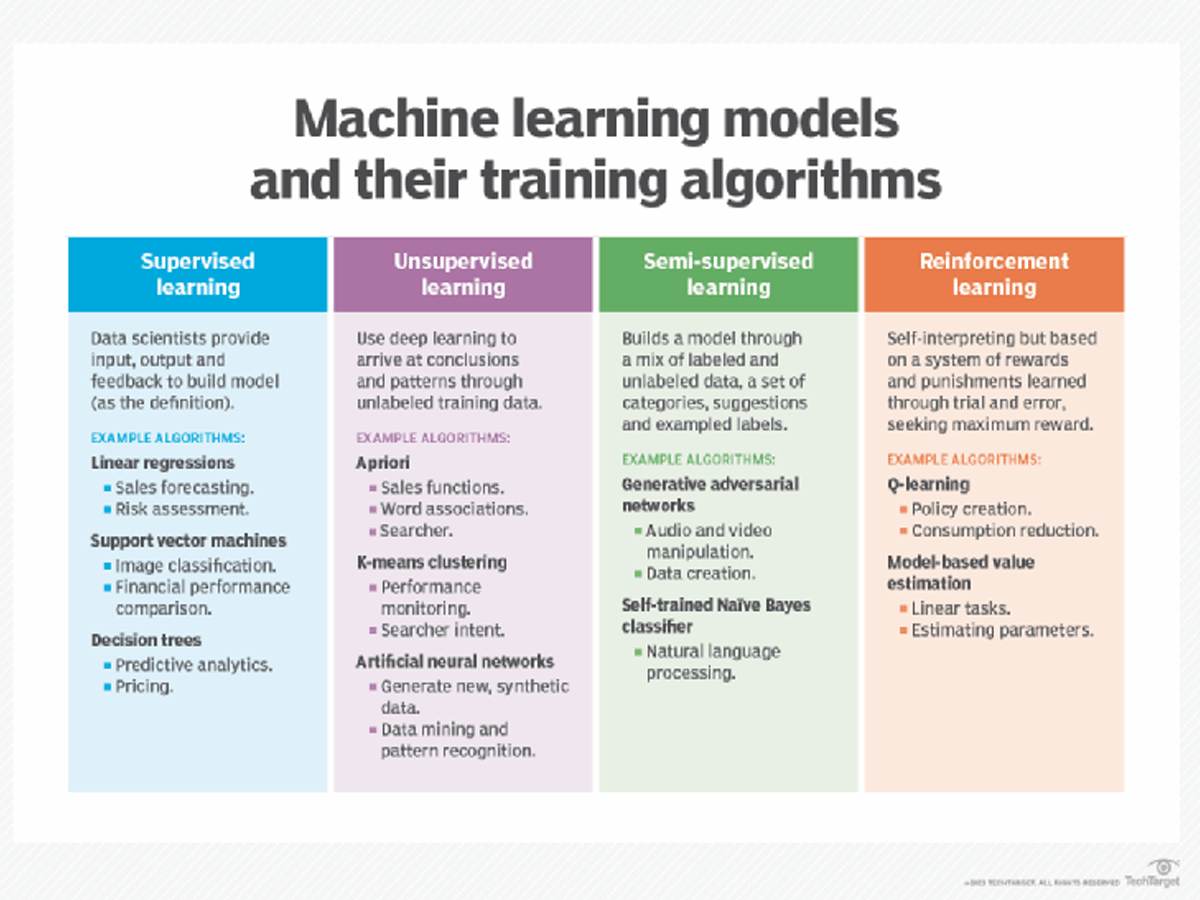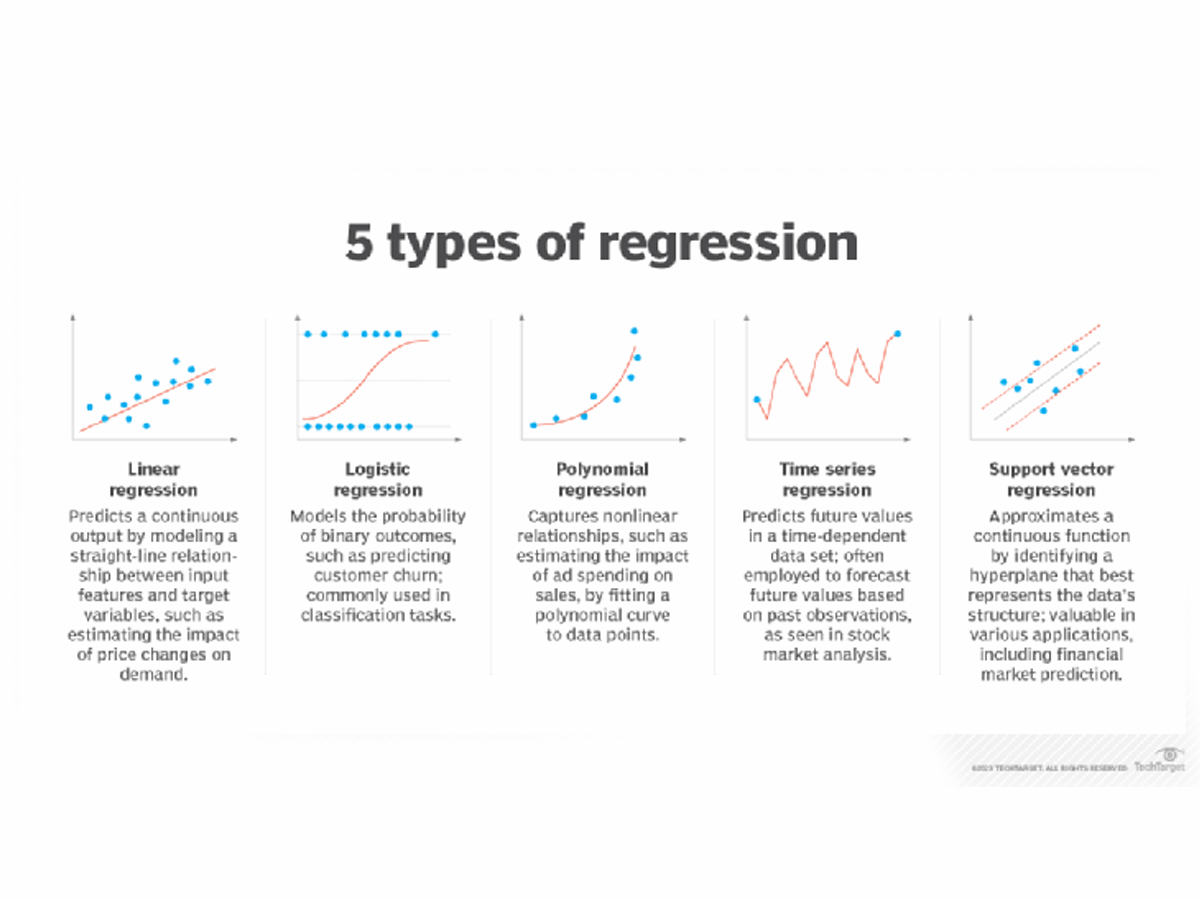Understanding Machine Learning (ML) is very important in a world run by big data, artificial intelligence, and machine learning. So, what is ML? Machine learning is basically a branch of artificial intelligence.
Artificial intelligence is a machine's ability to mimic how the human brain works and intelligence. Machine learning is a part of AI that uses algorithms to teach computers to learn and improve their processes.
Machine learning algorithms have the ability to enhance their performance over time as they are trained with large amounts of data. These algorithms generate machine learning models that contain the knowledge gained from running algorithms on training data. The more data that is used to train the algorithm, the more accurate and refined the model will become.

The Focus of Machine Learning
Machine Learning focuses on constructing computer systems that adeptly learn from data. ML's collection of techniques designates software applications, allowing them to enhance their performance continually. So, there are important factors we have to mention when we talk about ML.

Machine Learning Algorithms
These algorithms are finely tuned to uncover relationships and patterns within data. They leverage historical data to predict outcomes, classify information, cluster data points, reduce dimensionality, and even contribute to content creation.
Examples such as ChatGPT, Dall-E 2, and GitHub Copilot showcase the prowess of these algorithms. Yes, As we talked about in the 'Impact of Artificial Intelligence in Agriculture' article, these methods are used to predict the weather as well.
Applicability of Machine Learning
You can find ML in many applications across various industries, and it is very versatile. E-commerce, social media, and news organizations use ML through recommendation engines to show content based on users' past behavior on the platform itself.

Machine Learning and Machine vision technologies are in use for many critical functions in self-driving cars as well.
Healthcare benefits from ML, aiding in diagnosis and treatment planning. Fraud detection, spam filtering, malware threat detection, predictive maintenance, and business process automation. You can read more about it in the 'Use of Artificial Intelligence in Healthcare' article.
Adoption of Machine Learning

The adoption of Machine Learning is happening very fast, especially in 2023. "2023 AI and Machine Learning Research Report" from Rackspace Technology says 72% of surveyed companies integrate artificial intelligence and machine learning into their IT and business strategies. Reflecting its significance, 69% of respondents describe AI/ML as the most important technology.
Companies adopting ML report leveraging its capabilities to enhance there already existing processes, predict business performance and industry trends, and mitigate risks at rates of 67%, 60%, and 53%, respectively.
Why is machine learning important?
Machine Learning (ML) has been very important since the mid-20th century, thanks to pioneers such as Walter Pitts, Warren McCulloch, Alan Turing, and John von Neumann, who basically laid the groundwork for computation.
This technology, marked by ML, empowers machines to learn from data and helps automate tasks that were once done by humans. It's actually better than humans by efficiently processing the huge amounts of data generated by our digital devices. In various fields, too, like finance, retail, healthcare, and scientific discovery.
Different types of machine learning
Understanding machine learning (ML) involves recognizing its various categories, too. Classical ML is about algorithms refining their predictive abilities.
With four key types:
- supervised learning
- unsupervised learning
- semisupervised learning
- reinforcement learning
You must remember that true beauty lies in adaptability and m, and mostly, data scientists choose algorithms based on the data nature. These adaptable algorithms are not limited to a single ML type. Different problems and tasks need different datasets.
Deep Learning IN ML
Deep learning is a specialized ML subfield mostly focusing on neural networks with multiple layers—called deep neural networks.
Deep learning models like convolutional neural networks, and recurrent neural networks shine in various tasks, spanning supervised, unsupervised, and reinforcement learning methods, proving particularly adept at tasks like image and speech recognition.
Let's talk a bit more about these ML types. It will help you to understand this concept and its important.

Supervised Machine Learning:
Data scientists provide algorithms with a roadmap through labeled training data. The variables are very carefully defined and guide the algorithm in assessing correlations. Both the starting point (input) and the destination (output) are charted in this. While initially, many machine learning algorithms followed this structured path, the allure of unsupervised approaches.
Tasks of Supervised Learning:
- Binary classification: neatly categorizes data into two distinct groups.
- Multiclass classification: making choices among multiple answers.
- Ensembling: Orchestrating the harmonious predictions of multiple ML models.
- Regression modeling: predicting continuous values through intricate data relationships. It contains several techniques, such as linear, logistic, polynomial, time series, and support vector regression.
Unsupervised Machine Learning:
This doesn't rely on labeled data; instead, unsupervised algorithms are able to go through huge loads of unlabeled data without any supervision.
Tasks of Unsupervised Learning:
- Clustering - expertly sorting data into groups based on their kinship.
- Anomaly detection: spotting irregularities in the data.
- Association rule: uncovering sets of items frequently found together.
- Dimensionality reduction: chiseling away unnecessary variables and revealing the essence of the data.
Semisupervised Machine Learning:
Semisupervised learning takes a little bit of labeled training data to guide the algorithm, enabling it to map the dimensions of the data set. It's more or less a combination of supervised learning with its unsupervised counterpart's efficiency.
Applications of Semisupervised Learning:
- Machine translation: transforms algorithms into linguistic artists, translating with a partial dictionary.
- Fraud detection: spotting anomalies even without an extensive positive trail.
- Labeling data: Labeling data becomes automated as algorithms trained on modest data sets learn to tag larger sets effortlessly.
Reinforcement Learning:
In reinforcement learning, algorithms learn like an apprentice. Data scientists set the rules, defining actions that lead to rewards or punishments. This interactive learning process is used in a lot of fields, from robotics to video gameplay. This is very important field that use use machine learning.
Choosing and Building the Right Machine Learning Model

Building the perfect machine learning model is very important to get your task done correctly. It all starts by wrapping your head around the business problem.
Understanding what needs fixing, why you need machine learning, and what you want as the end result. Plus, Which algorithm suits the mission? Are there transparency and bias concerns? What's supposed to go in, and what should come out? These are the first few questions you might answer before starting everything.
Next, figuring out your data needs is important. How do you split the collected data into sets and the learners (training sets)? Can you borrow a pre-trained ML model to get a head start?
Collecting and preparing the data for the model's training is the next step. In this step, don't forget to hide personal data and split the data into training, test, and validation sets.
Determining the model's features is next. In here Adjust hyperparameters, train, validate, and make learning sets on the block. Depending on the problem, you have to include some neural networks or transformers for NLP tasks.
Evaluating the model is also a must. Do some confusion matrix calculations, business key performance indicators, ML metrics, and some soul-searching to see if it meets the business goals.
Deploying the model is the biggest thing. Collaborate with data science and ML engineers, measure its performance continuously, set benchmarks, and keep tweaking for flawless performance.
Continuously refine and adjust the model. Even after it's made a name for itself, keep an eye out for changes in business requirements, tech capabilities, and the wild ways of real-world data.
Emerging Trends in Machine Learning
The future of machine learning holds exciting possibilities driven by ongoing trends.
1. Quantum Computing Effect: High hopes rest on the optimization of machine learning speed through quantum computing, enabling simultaneous multi-stage operations and significantly reducing execution times.
2. The Big Model Creation: Anticipation surrounds the development of all-purpose models that can perform various tasks simultaneously.
Efforts are underway to reinforce scalability and structure for these versatile models.
3. Distributed ML Portability: Expect advancements in distributed machine learning, allowing the seamless use of datasets across various systems.
The goal is to run tools natively on different platforms, eliminating the need for constant adaptation.
4. No-Code Environment: Open-source frameworks are evolving to minimize coding efforts, allowing non-programmers easy access to machine learning. Automated ML is set to improve result quality and analysis.
5. The Power of Reinforcement Learning: This revolutionary aspect of machine learning enables smart decision-making in dynamic settings without explicit teaching.
Expect breakthroughs in industries like economics, biology, and astronomy.
Machine learning applications for enterprises
Business Intelligence

Machine learning is integral to Business Intelligence (BI) and predictive analytics software. These applications leverage advanced algorithms, specifically incorporating linear and logistic regression techniques.
Customer relationship management
In customer Relationship Management (CRM), machine learning is pivotal in various applications. This involves examining customer data to effectively segment customers, anticipate behaviors like churn, offer personalized recommendations, fine-tune pricing strategies, optimize email campaigns, deliver chatbot support, and identify potential instances of fraud.
Security and Compliance
Within security and compliance, sophisticated algorithms, including anomaly detection and support vector machine (SVM) techniques, play a crucial role in recognizing normal behavior and detecting deviations.
This capability is paramount in identifying potential cyber threats. SVMs specifically excel in determining the optimal line or boundary that separates data into distinct groups with maximal space between them.
Human resource information systems
In human resource information systems, machine learning models streamline hiring by efficiently sifting through applications. They discern and pinpoint the most qualified candidates for a given open position.
Supply chain management
Machine learning techniques play a key role in enhancing various aspects of supply chain management. These techniques work to optimize inventory levels, streamline logistics processes, refine supplier selection procedures, and proactively tackle potential disruptions within the supply chain.
Natural language processing
In natural language processing, machine learning models empower virtual assistants such as Alexa, Google Assistant, and Siri to comprehend and respond to human language.
Weighing Advantages and Disadvantages of Machine Learning

When we talk about machine learning (ML), it's essential to understand both the advantages and disadvantages of this technology. Let's first talk about the advantages.
Advantages of Machine Learning:
- Historical Data Analysis: Machine learning allows organizations to analyze huge amounts of historical data, extracting meaningful patterns and insights.
- Launching Recommender Systems: ML powers recommender systems, enhancing user experiences by suggesting relevant content or products based on preferences and behaviors.
- Improving Planning: Machine learning contributes to better planning processes, enabling organizations to make informed decisions and allocate resources effectively.
- Assessing Patterns: ML excels at identifying patterns within large datasets, providing valuable decision-making and strategy formulation insights.
- Boosting Efficiency: Automation is a key advantage of machine learning, automating repetitive tasks and processes, thereby boosting overall operational efficiency.
Advancements in Machine Learning
1. Computer Vision: The error rate in identifying objects in images and videos has plummeted from 26% to an impressive 3% in under a decade.
2. Focused Personalization: Businesses now tailor products and services using sophisticated recommender systems and algorithms.
3. Improved Internet Search: Search engines, particularly Google, are optimizing their output by learning from past data, handling over 8.5 billion searches daily.
4. Chatbots in Action: Chatbots, exemplified by KIA's successful venture, contribute significantly to improving marketing and customer service operations.
5. The Rise of ChatGPT: OpenAI's ChatGPT, a cutting-edge conversational artificial intelligence model, is a game-changer. With its generative pre-trained transformer architecture, it responds intelligently to diverse queries and is a powerful tool in artificial intelligence.
6. Transportation Trends: Machine learning has been seamlessly integrated into logistics and aviation, enhancing efficiency, safety, and the accuracy of estimated arrival time (ETA).
Disadvantages of Machine Learning

- Cost: Implementing machine learning systems can be expensive, involving costs related to infrastructure, skilled personnel, and ongoing maintenance.
- Bias in Algorithms: Machine learning algorithms can inherit biases in training data, leading to biased outcomes or discriminatory results, especially in sensitive areas like hiring or finance.
- Challenges in Explaining Complex Models: Some machine learning models, particularly deep neural networks, are highly complex and challenging to interpret, making it difficult to explain their decision-making processes to stakeholders or regulatory bodies.
More machine learning challenges?
1. Data Acquisition Dilemma: The effectiveness of machine learning hinges on sufficient and high-quality data. Ensuring unbiased and accurate training data remains a persistent challenge.
2. Resource Crunch: Implementing machine learning demands significant resources, from powerful computers to substantial investments in development, financing, and data collection.
3. Data Transformation Trials: Contrary to misconceptions, machine learning is about transforming raw data into features, and errors in this process can affect long-term efficiency.
4. Navigating Results and Interpretation: Machine learning models can make self-fulfilling predictions based on incorrect training data, making result interpretation a challenging task.
5. Battling Bias and Discrimination: Preventing bias and discrimination in training data is crucial, particularly in sensitive areas like recruitment and hiring practices.
How do AI and ML Connect?

Understanding the difference between AI and machine learning is crucial. As a broader concept, AI empowers machines to emulate human functions, including sensing, reasoning, acting, or adapting. On the other hand, ML, an application of AI, allows machines to extract knowledge from data autonomously.
AI goes beyond mere imitation, simulating human intelligence to solve complex problems. The ultimate goal is to develop intelligent systems that handle intricate tasks across various applications.
Artificial intelligence's versatility shines as it works seamlessly with all data types, including structured, semi-structured, and unstructured formats. Its learning process involves logic, decision trees, and continuous self-correction.

While artificial intelligence involves mimicking human intelligence, ML focuses on teaching machines to perform specific tasks by identifying patterns. ML specializes in analyzing live transit data for accurate traffic predictions.
Benefits of using AI and ML together:
The connection between artificial intelligence and machine learning unlocks powerful benefits for organizations. As data expands in size and complexity, these technologies become pivotal for the automation of tasks, value unlocking, building applications of AI like AI system, and generating actionable insights.
Organizations experience improved outcomes, streamlined processes through task automation, increased value realization, and actionable insights for making better-informed decisions.













